Incredible German landmarks seen from the skies
Vertiginous viewpoints
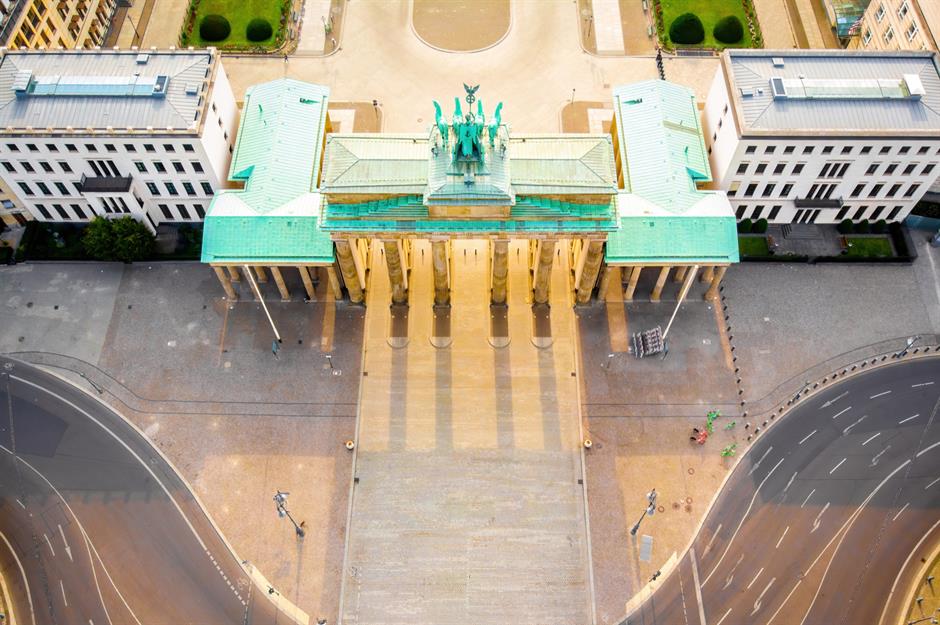
Germany is home to some world-famous landmarks from cathedrals to chalk cliffs, with many of them instantly recognisable. But things look a little different from up high, revealing details rarely seen by visitors and showcasing the sheer scale and sumptuousness of castles and palaces. Here are some of the most gorgeous shots taken of German landmarks from the sky.
The Eagle’s Nest, Bavaria
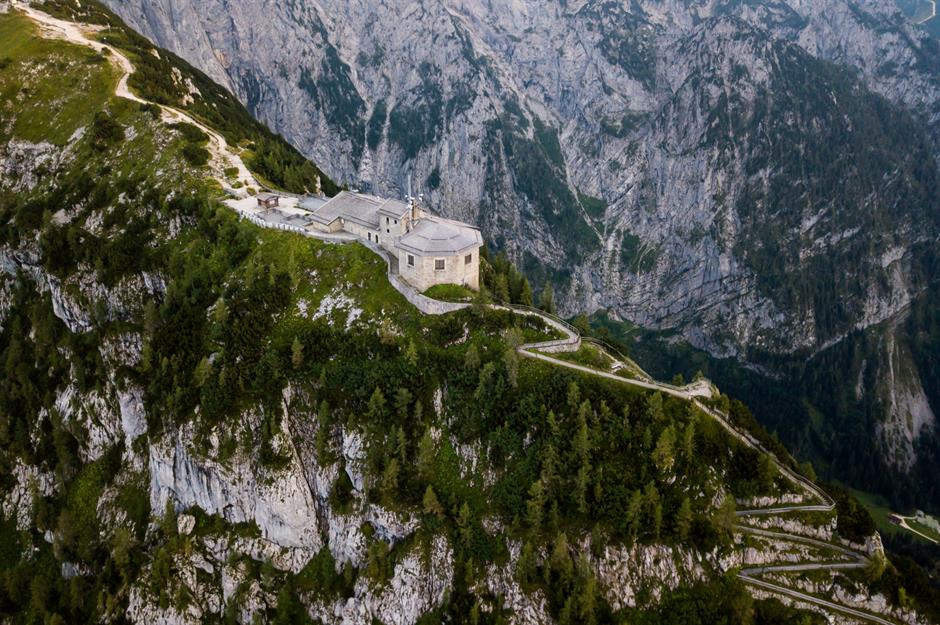
This dizzying aerial shot certainly shows how this building, perched atop the 6,000 feet (1,829m) high Mount Kehlstein in the Bavarian Alps, got its name. The Eagle’s Nest or Kehlsteinhaus was gifted to Hitler on his 50th birthday and, although he didn’t spend much time here, it became a symbol of Nazi rule. Now a restaurant, it’s one of few undamaged monuments of the era and an engineering marvel, reached via a road carved into the mountains and accessed via a golden elevator.
Allianz Arena, Munich
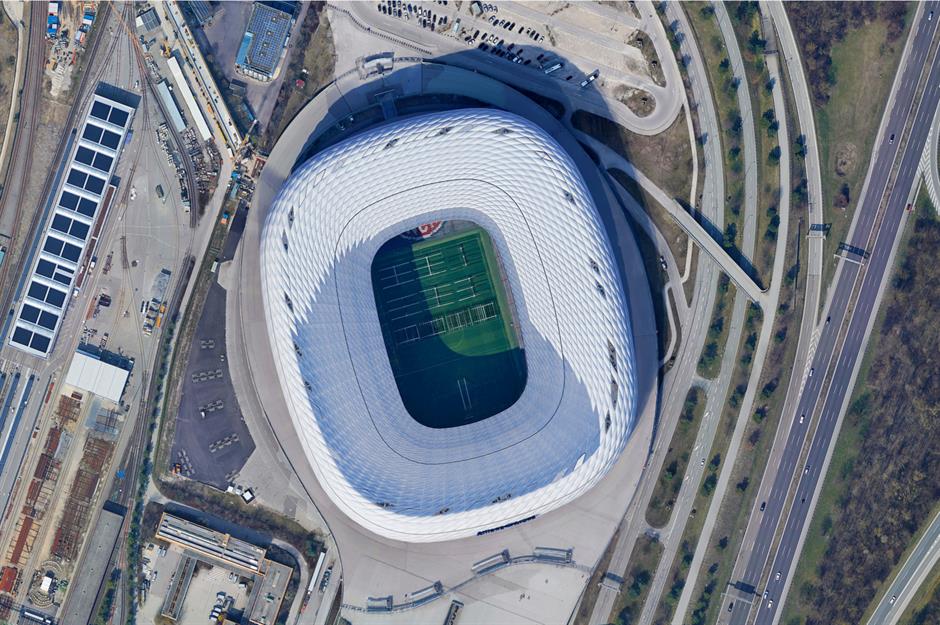
Its architecture may stand in stark contrast to the city’s centuries-old structures but the home of FC Bayern Munich has become one of the most recognisable landmarks. The striking stadium, which opened in 2005, has been nicknamed “the inflatable boat” due to its round exterior, lined with inflatable panels. It looks particularly striking from above with a glimpse of the pitch, AKA where the magic happens.
Lake Eibsee, Bavaria
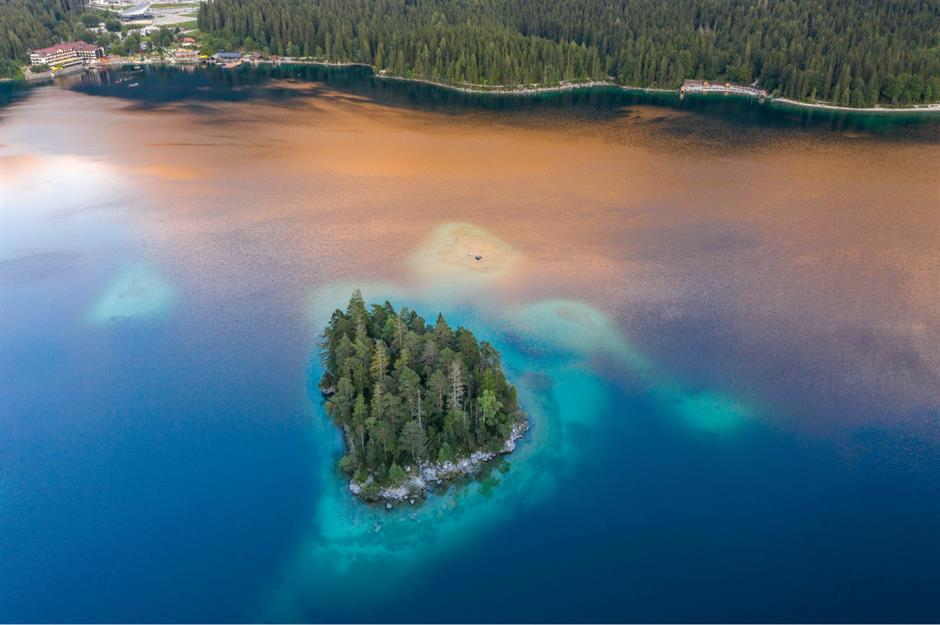
This gorgeous drone shot explains why this tree-covered islet has been nicknamed “Turtle Island”, its triangular form surrounded by what looks like a spectral, turquoise amphibian but is in fact shallower water around its shores. It’s one of eight tiny islets dotted on the sapphire water of Lake Eibsee, located at the foot of the Zugspitze Mountain in Bavaria. The lake was formed by a rocky landslide that created a large basin during the last ice age.
Muskauer Park, Upper Lusatia
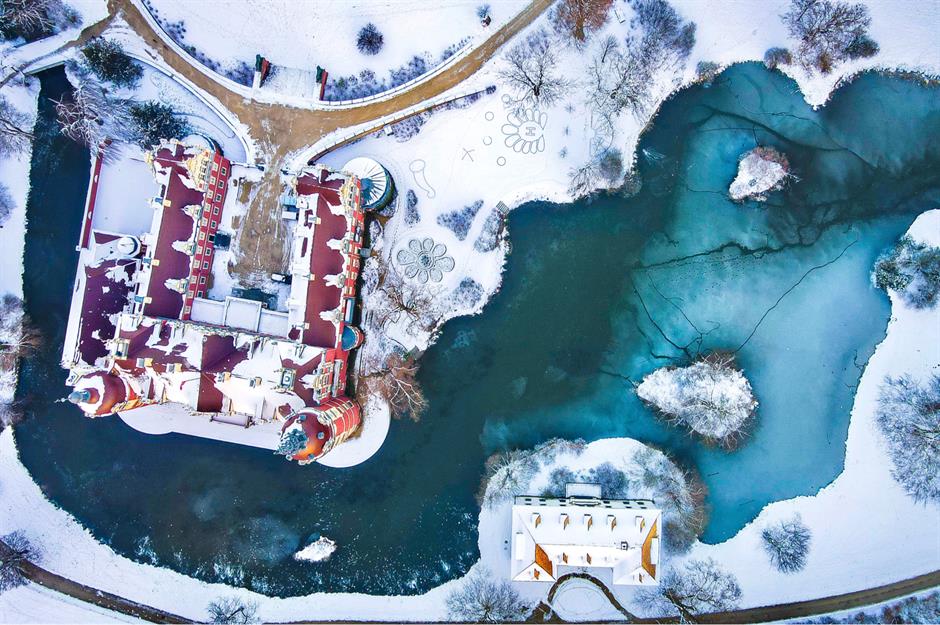
UNESCO-listed Muskauer Park, in the town of Bad Muskau and sprawling over the border into Poland, is famed for its landscaped grounds inspired by English gardens. Eschewing manicured lawns and immaculate borders in favour of native plants and blooms, it blends beautifully with the natural landscape – and, as this drone image shows, its red New Palace looks particularly magical dusted with snow. It is the most eye-catching part of this park, which crosses over the border into Poland.
Cologne Cathedral
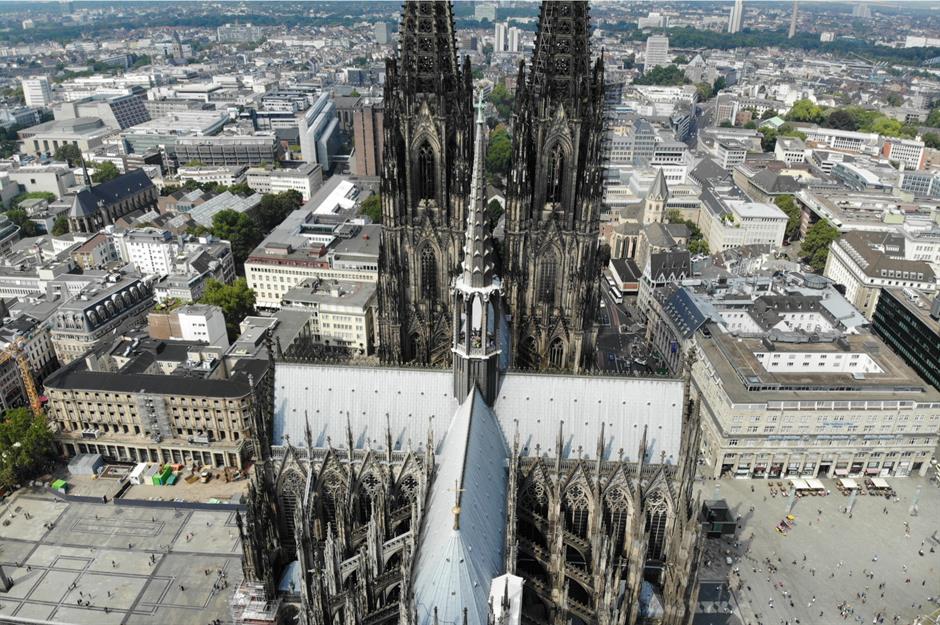
The spires of this Gothic masterpiece can be seen from pretty much anywhere in the city of Cologne. Yet the Catholic cathedral, which towers over the Rhine, looks even more imposing when viewed up close, as this striking overhead shot shows. The cathedral’s construction began in 1248 and wasn’t completed in 1880, and the intricacy of the five-sided basilica goes some way to explaining why it took so long to complete.
Wartburg Castle, Eisenach
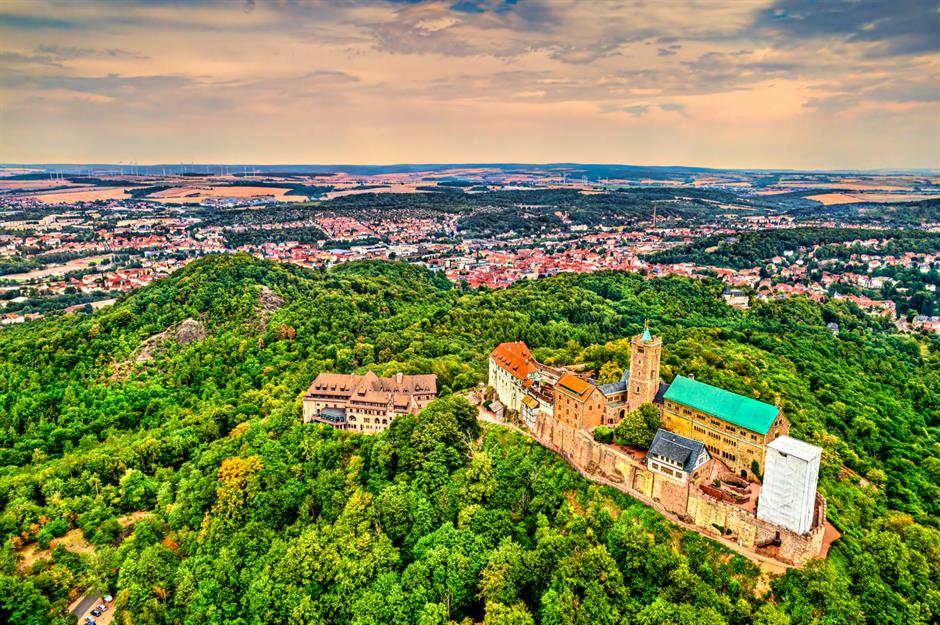
The eclectic, patchwork architecture of hilltop Wartburg Castle is best appreciated from the skies. Perched high above the town of Eisenach, the castle’s origins are believed to date back to 1067, though the oldest surviving part is the 12th-century great hall and additions were made up until the 19th century. This was the first fortress in Germany to be designated a UNESCO World Heritage Site, with the added significance of being where Martin Luther translated the Bible.
Berlin TV Tower
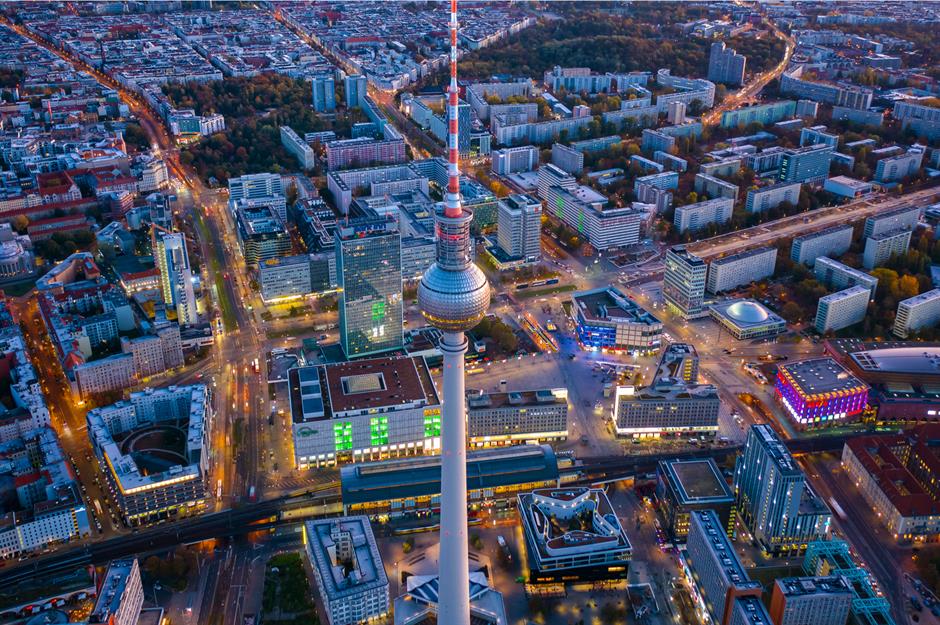
Germany’s tallest building is hard to miss from anywhere in Berlin, where it looms high above landmarks including the copper-domed Berlin Cathedral. Its skinny, spindly style is even more striking in this aerial shot, though, giving a bird’s-eye view of its striped antenna. The tower was built in 1969 as a demonstration of East Germany’s strength and today symbolises the country’s unification since the toppling of the Berlin Wall.
Love this? Follow our Facebook page for more travel inspiration
Sanssouci Palace, Potsdam
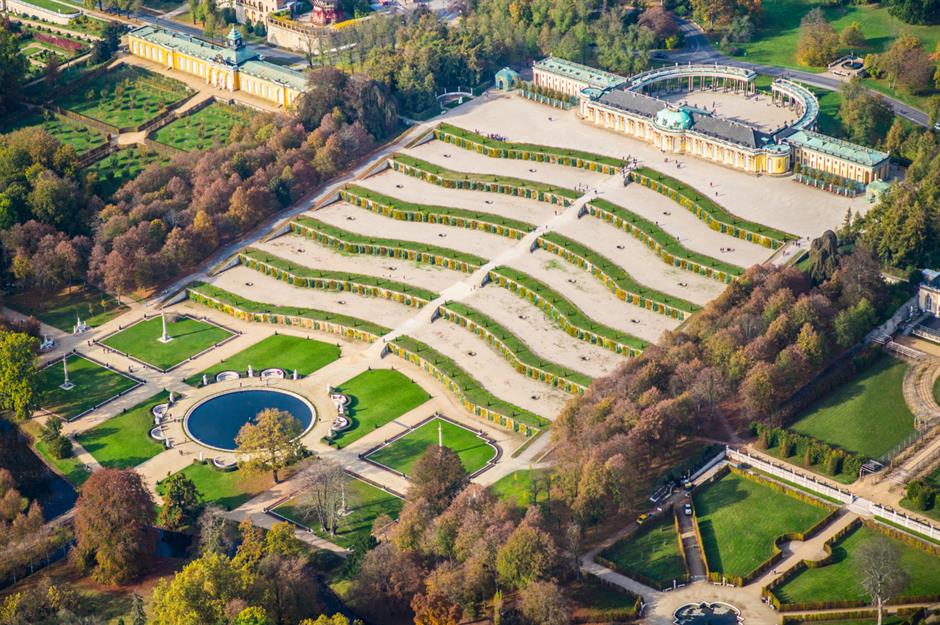
Potsdam, just outside Berlin, is known as the “Prussian Versailles” for its opulent structures – and Sanssouci Palace is the grandest of them all. Built in the mid-18th century as the summer home of Frederick the Great, its name translates as “without a care”, though we reckon the maintenance staff must have quite a task to keep these lawns and water features so pristine. This picture also shows other, smaller palaces on the elegant estate.
Wadden Sea
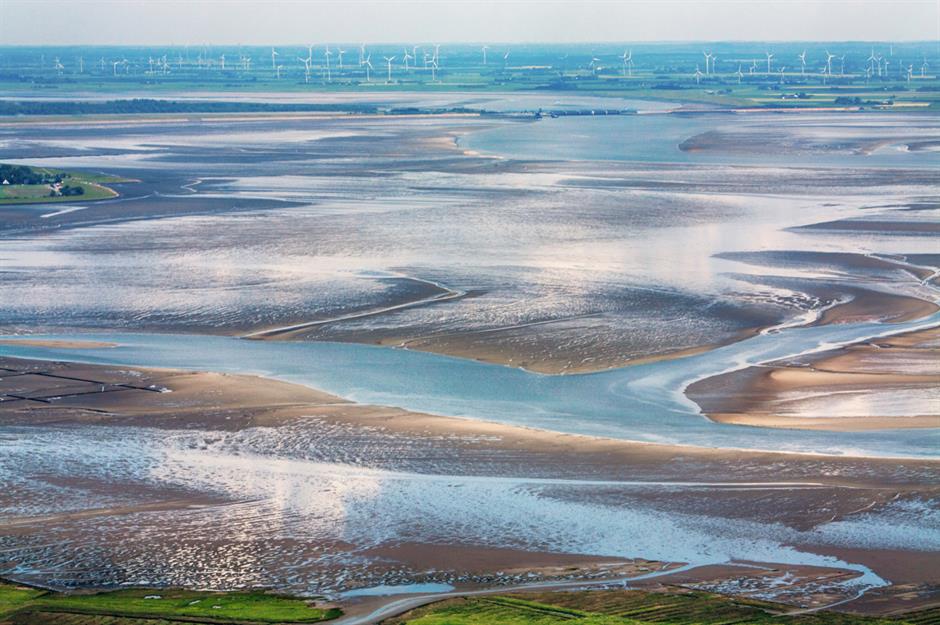
This network of sand spits, mud flats and wetlands is the largest such intertidal system in the world, spilling into the Netherlands and Denmark as well as Germany. Its ecological importance, and the fact it provides a rich ecosystem for flora and fauna, have earned it a place on the UNESCO World Heritage list. Scattered with the Frisian or Wadden Islands, known for their wild beauty and stretches of pale sand, the area also sees up to 12 million migratory birds each year.
Hohenzollern Castle, Baden-Wurttemberg
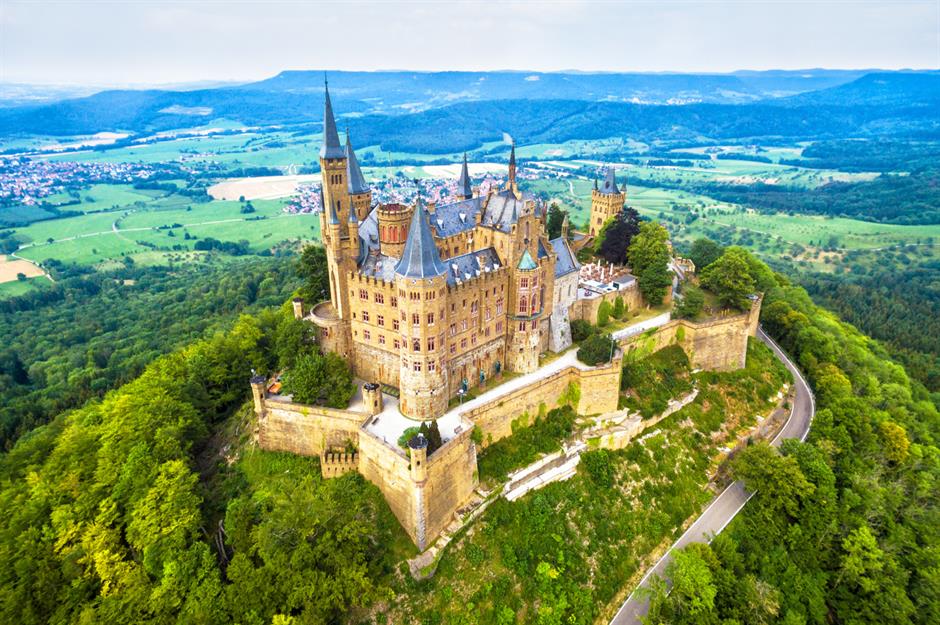
This glorious castle is one of the country’s most visited and, thanks to its perch atop its namesake mountain, is visible for miles around. Only an aircraft or, as in this case, a drone can capture it from this angle, though, showing off both its Neo-Gothic architecture and its verdant surroundings. It’s the third castle to occupy the spot, as the ancestral seat of the Prussian Royal House, with its present incarnation completed in the mid-19th century.
Berlin Cathedral
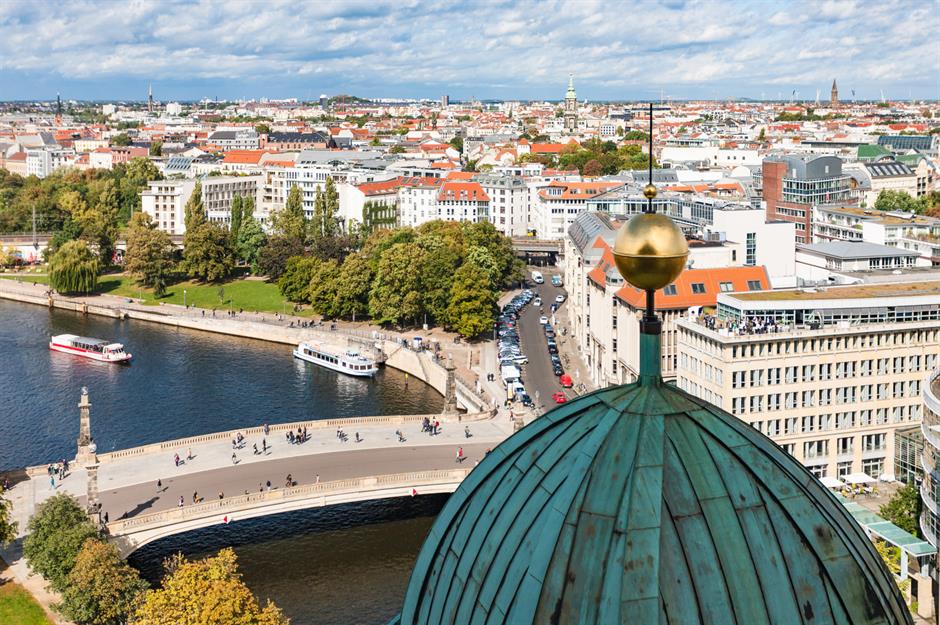
Despite its name, this Berlin icon isn’t technically a cathedral because it's never been the seat of a bishop. The Neo-Renaissance structure, finished in 1905, is still beautiful, though, whether gawped at from below or viewed in extreme close-up. This pic of one of its four gold-topped towers shows the lofty position it holds in the city, as well as the glorious duck-egg blue hue of the copper domes.
Explore more about Berlin with our guide on what to do and see there
The Bastei, Lohmen
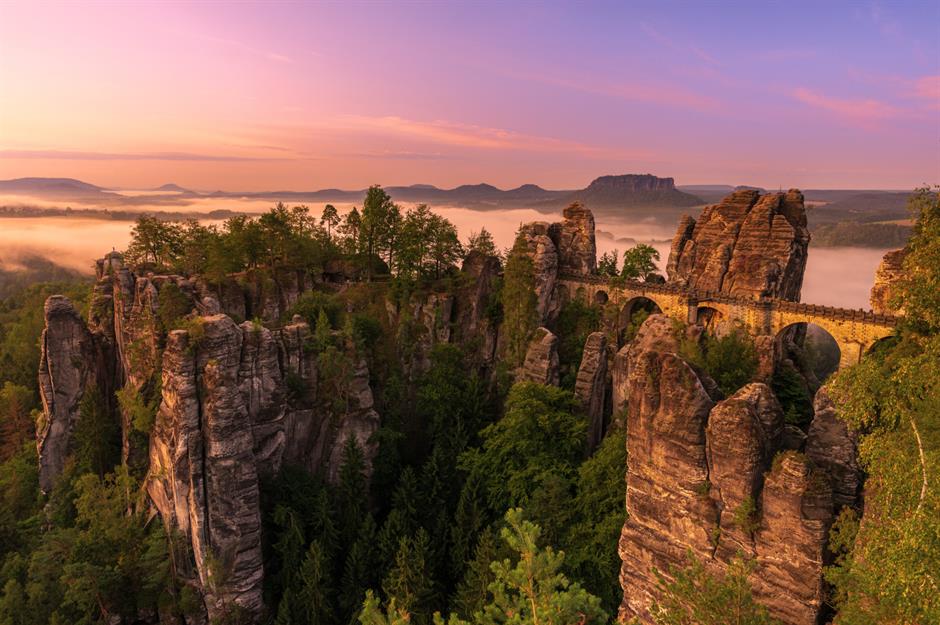
It can be hard to tell where nature ends and human architecture begins when gazing on this incredible attraction in Saxon Switzerland National Park. All that remains of Felsenburg Neurathen, a 12th-century castle that once loomed up here, can just be spied among the maze of rock formations and trees, weaved together by bridges and ladders. A larger sandstone bridge, to the left of the photo, was built in the mid-19th century to provide access to visitors.
The Westwork of Corvey, Westphalia
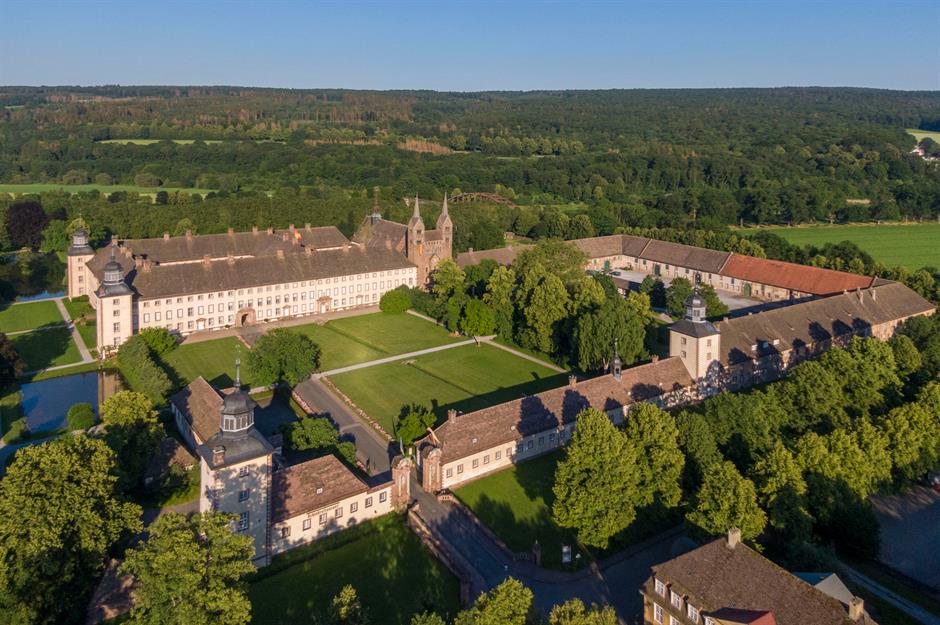
The westwork or western façade of this 9th-century monastery, convent and abbey is the only standing structure dating back to the early medieval period of the Carolingian era. And this photo really shows off its grandeur – and just how well-maintained the grounds are. It was built on the riverbank by French Benedictine monks in AD 822, when it was among many such structures, and today its façade and grand, vaulted halls remain remarkably intact.
Nymphenburg Palace, Munich
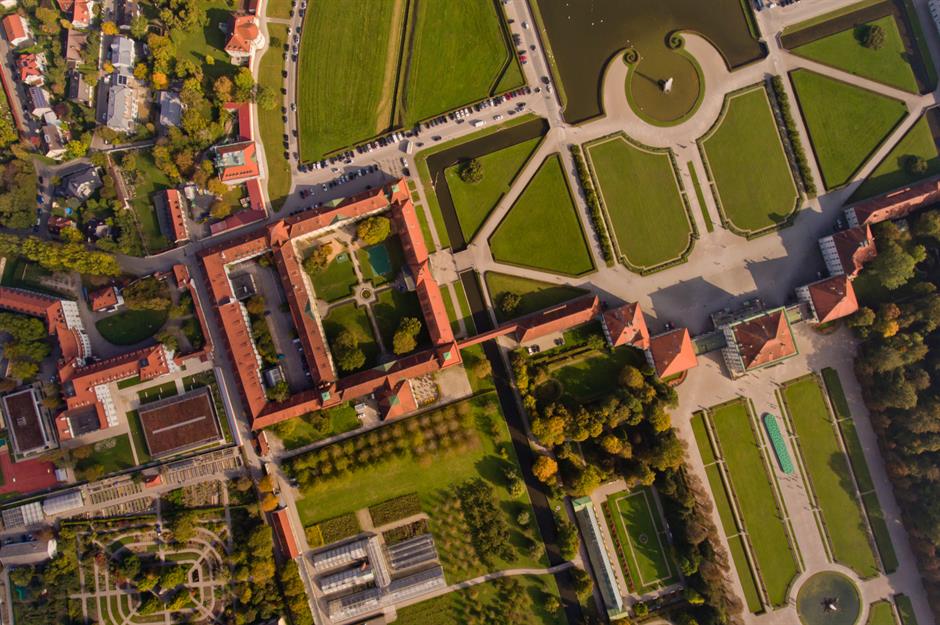
Nymphenburg Palace started life as a royal summer residence in the 17th century and, while the Italianate, cubic building and its gardens were lovely, they had nothing on what sprawls across the grounds today. Over the following two centuries, pavilions were expanded and added, the Rococo hunting lodge, Amalienburg, was added, and a complex of structures created a kind of regal town. This drone shot shows off the vastness and extraordinary symmetry of the estate, particularly the Baroque gardens.
Königsstuhl, Rügen
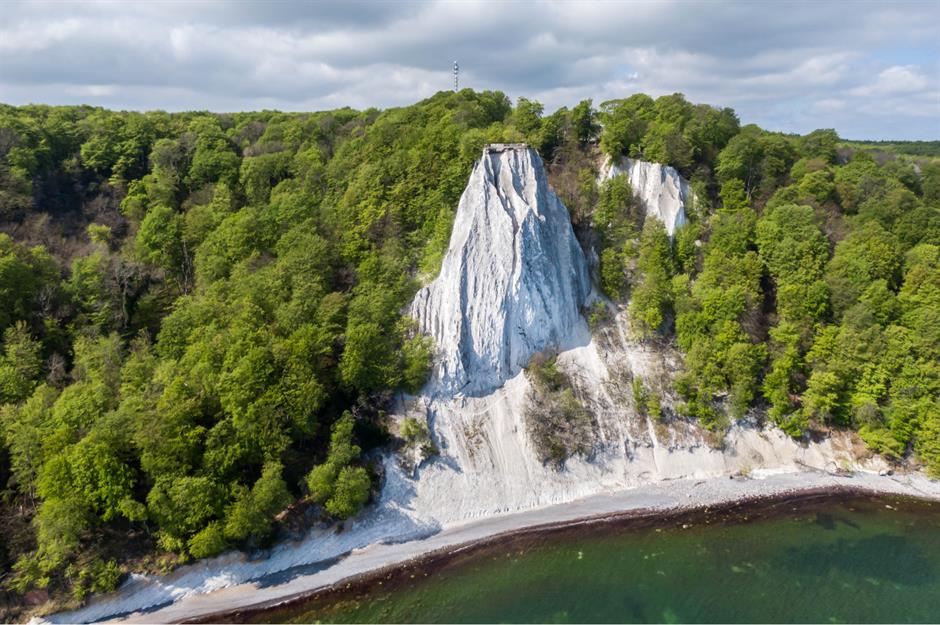
The island of Rügen, part of Jasmund National Park in the Baltic Sea, is known for its dramatic, sparkling white chalk cliffs, and Königsstuhl is the king of them all. In fact it's known as “King’s Chair”, though presumably that refers to a giant king. It looks especially big, bright and beautiful against the blue-green of the water and wearing its emerald cloak of ancient beech forest.
New City Hall, Munich
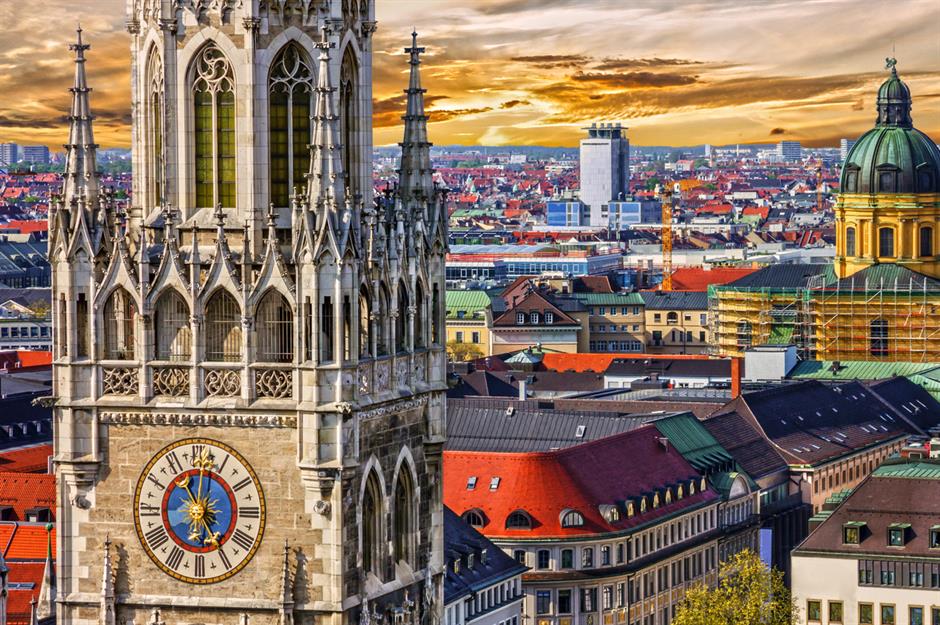
Munich’s Marienplatz (central square) is the city’s heart and the New City Hall, or Neues Rathaus, is its glory. The Neo-Gothic hall was constructed in the late 19th century and is one of the city’s most recognisable, unusual and intricate buildings, as this close-up of its tower shows. It’s still a city hall yet has many other roles, too, from being where FC Bayern Munich players greet fans after a big win to showcasing Munich’s history through daily performances by figurines within the Glockenspiel clock.
Aachen Cathedral
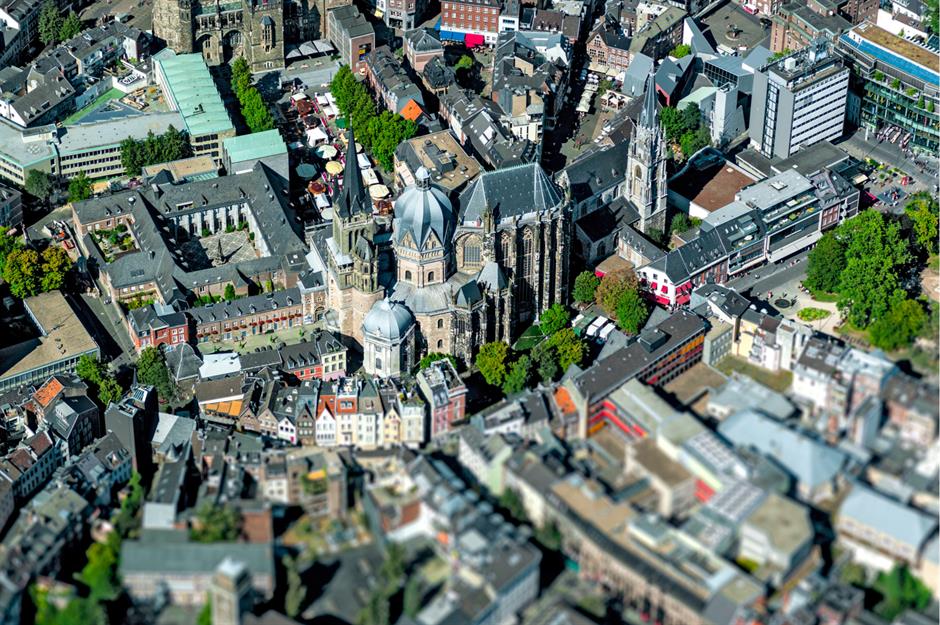
Another picture-perfect landmark that looks positively minuscule and toy-like when viewed from the skies, Aachen Cathedral is arguably the most striking structure in this Roman spa city, which lies close to the borders with Belgium and the Netherlands. Its Gothic exterior certainly has an impact on the landscape, as this aerial shot shows. The church was constructed in the 8th century as a chapel for Emperor Charlemagne, who was buried here in 814, and further expanded and embellished in the Middle Ages.
Hintersee, Bavaria
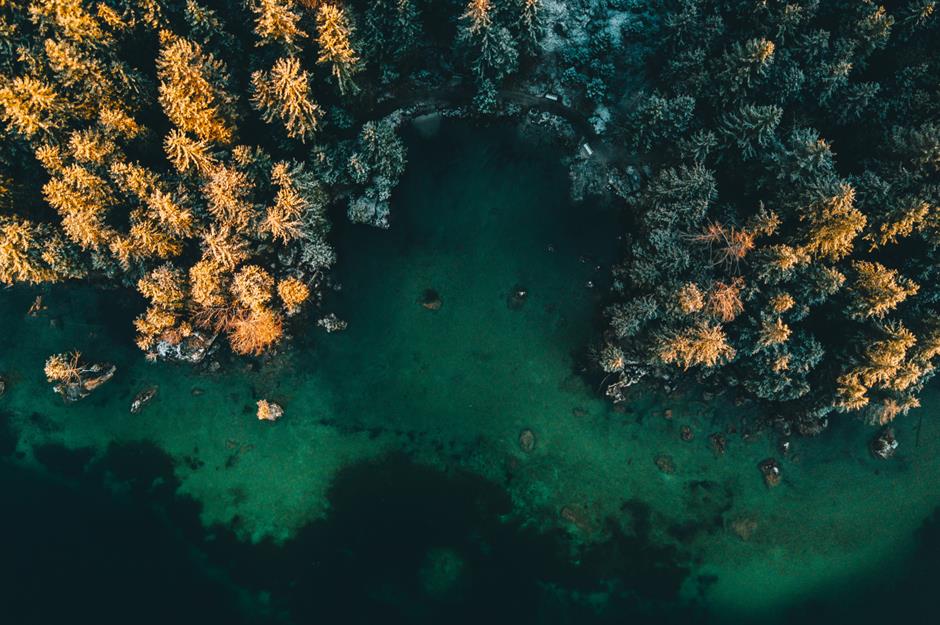
Hintersee, a lake in the Bavarian Alps, is just glorious from any conceivable angle, edged by trees, surrounded by mountains and filled with clear, shimmering emerald water. This autumnal image shows how thickly forested its shores are, as well as the lake’s gorgeous shades of green and blue. Trails around the lake and through the woods have signs about artists who have, understandably, been inspired by the area’s beauty.
Discover more stunning images of the world taken from the skies
Schloss Belvedere, Weimar
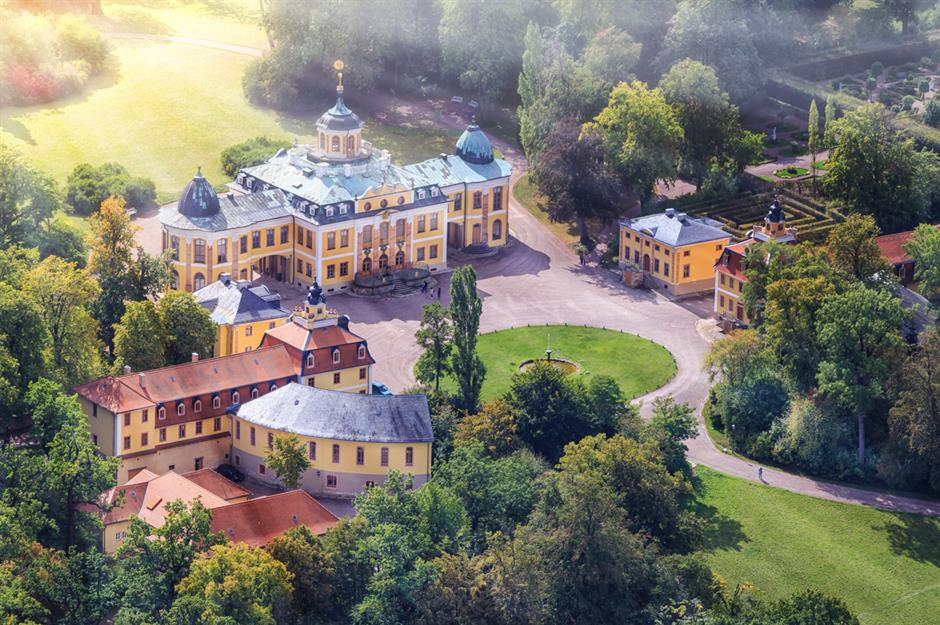
This 18th-century castle was built as a summer residence or pleasure palace for Duke Ernst August, and it certainly looks like a decent place to spend a few weeks in the sunshine. This overhead shot shows just how lovely, sweeping and well-maintained the grounds are, with enviable walled gardens, an orangery and even a labyrinth. The elegant yellow-and-white Baroque palace isn’t bad, either.
Olympiapark, Munich
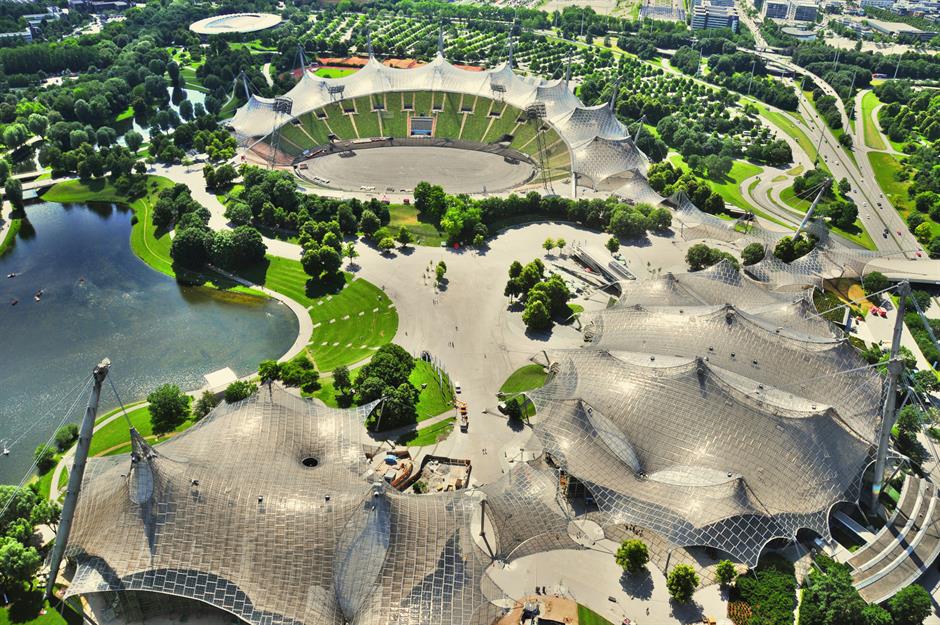
One of Munich’s most impressive green spaces was originally built for the 1972 Olympics. The hilltop attraction has managed to transition beautifully into a sprawling, inspirationally designed park and event space, with bike paths, lakes, restaurants, sport facilities – including an Olympic swimming pool – and football stadium. Its dips, curves and the signature tented structures give it a unique, futuristic appearance, especially when viewed from above.
Hainich National Park, Thuringia
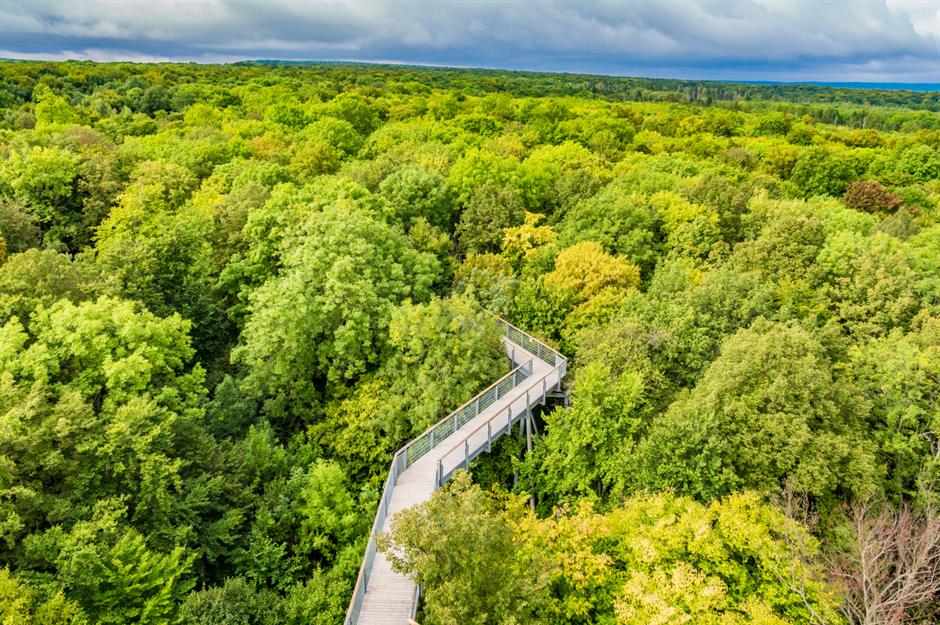
The views are pretty spectacular from the canopy walk that zigzags through Hainich National Park – and even more so from the skies, as this striking image shows. These swathes of native beech forest were once part of a restricted military zone, which allowed the woodland to grow undisturbed and thrive as one of the last remaining such ecosystems in Central Europe. The park is now a protected wilderness area roamed by wild cats, wolves and lynx.
Speyer Cathedral
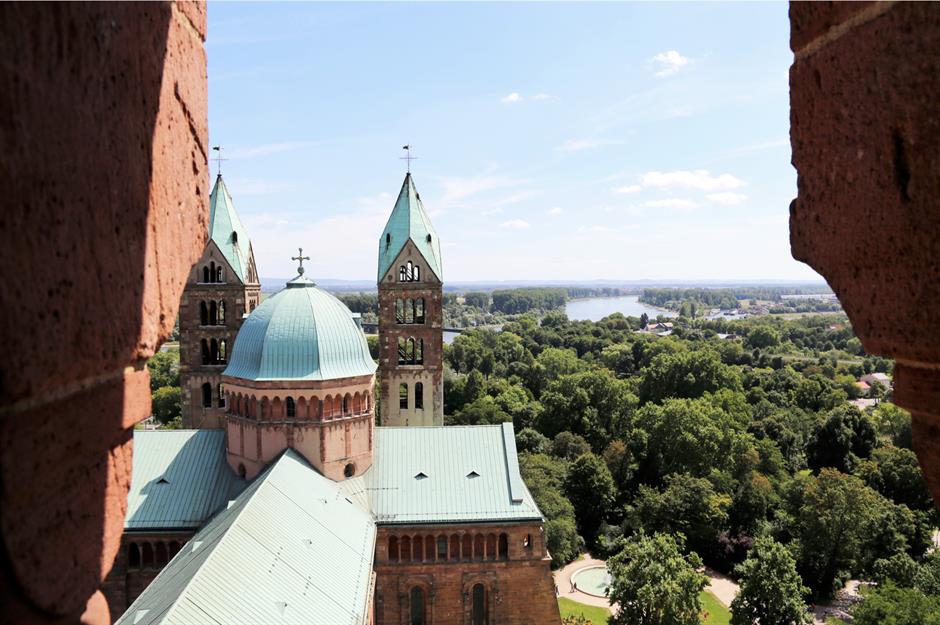
This vertiginous view across the rooftop and domes of Speyer Cathedral demonstrates both its grandeur and how much it dominates the landscape. Located in the town of Speyer, which translates as “spire”, the twine-domed basilica is the largest Romanesque church in the world, having been extended from a flat-ceilinged basilica to a grand vaulted structure in 1077. German emperors were buried here for almost three centuries for the late 11th century.
Augustusburg Castle, Brühl
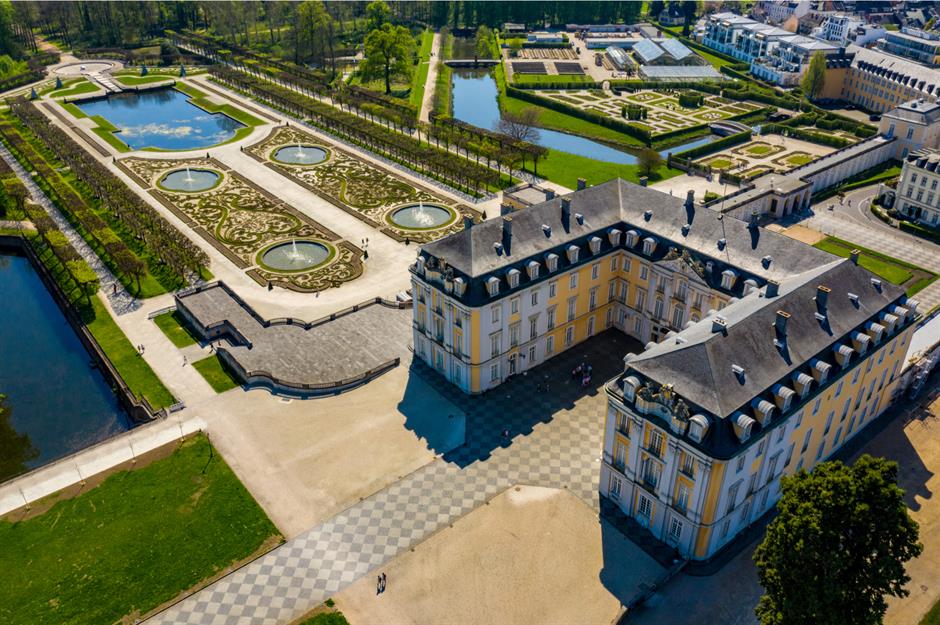
This buttercup-yellow castle looks so adorable from above we’d like to pick it up and put it in our pocket. It’s unlikely to fit, though, as this elegant Rococo estate, built in the 18th century, is a sprawling maze of grand halls and rooms. The Baroque gardens look particularly perfect when viewed with a bird’s eye, planted to form intricate patterns and interspersed with symmetrical water features.
Discover 40 of Germany's most beautiful small towns and villages
Ferchensee Lake, Bavaria
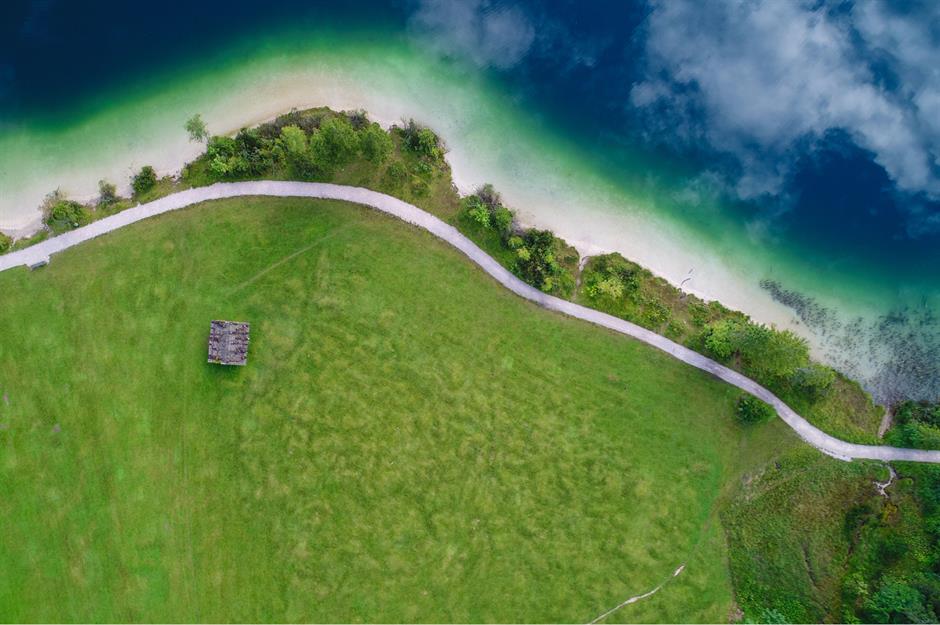
Another idyllic lake in the Bavarian Alps, Ferchensee Lake, near Mittenwald, is a fabulously pristine and pretty body of water that's 3,478 feet (1,060m) up in the mountains and surrounded by peaks. And, as this beautiful drone shot displays, its shores are rather lovely, too. With lush meadows, trees and pale beaches around the sapphire water’s edges, it’s an understandably popular swimming spot.
Maulbronn Monastery
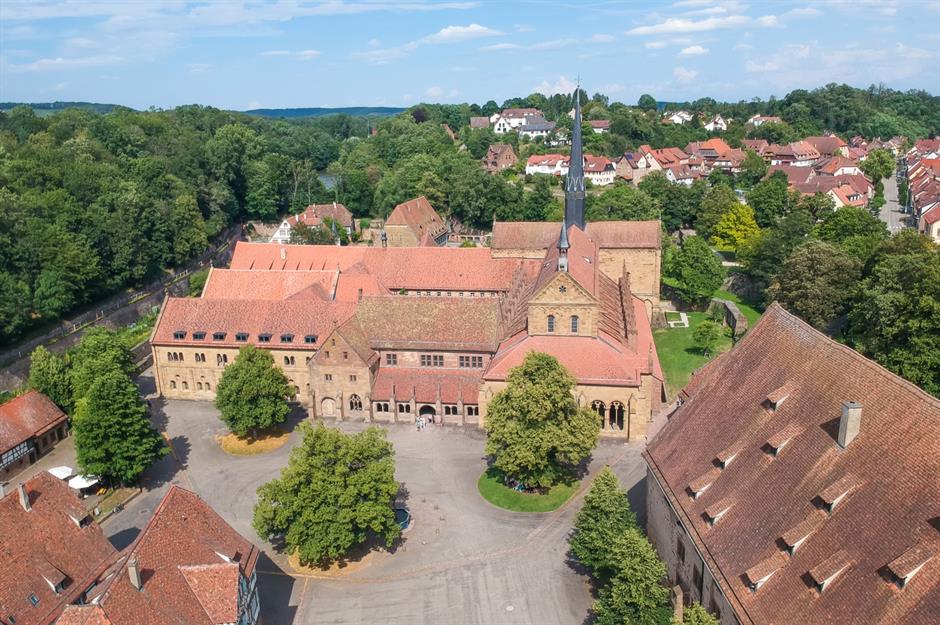
It’s easy for visitors to get lost amongst the jumble of colourful, charming buildings that make up this former Cistercian abbey – but the best way to appreciate how impeccably well-kept its structures are is from a height. The 12th-century monastery in Maulbronn is the most complete and best-preserved medieval complex of its kind north of the Alps, according to UNESCO. It’s an intriguing architectural mix of red-roofed stone cottages, colourful cloister buildings and a church with Gothic spires.
Bergpark Wilhelmshöhe, Kassel
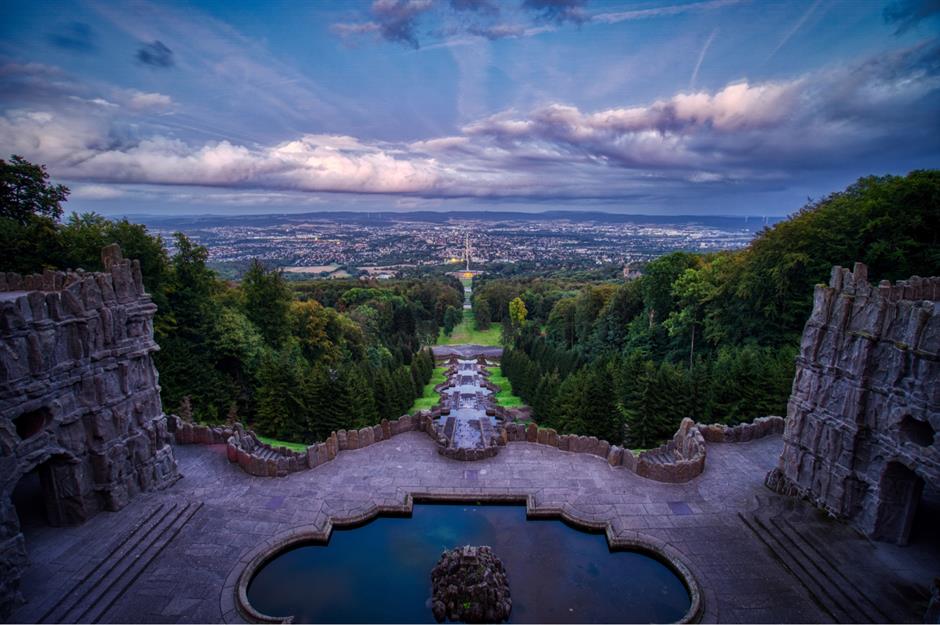
Water features don’t come much grander than those that cascade in this Baroque “bergpark” (mountain park), the largest hillside park in Europe and an awe-inspiring example of how man-made design can capture the dramatic beauty of nature. Its painstaking construction began in 1689 when the Landgrave of Hesse-Kassel, Charles I, created the display of waterworks that cascade from a building topped by a copper statue of Hercules. This overhead shot illustrates the elaborateness of the waterworks, which encompass waterfalls, rapids, grottoes, a fountain and a Roman aqueduct.
Naumburg Cathedral
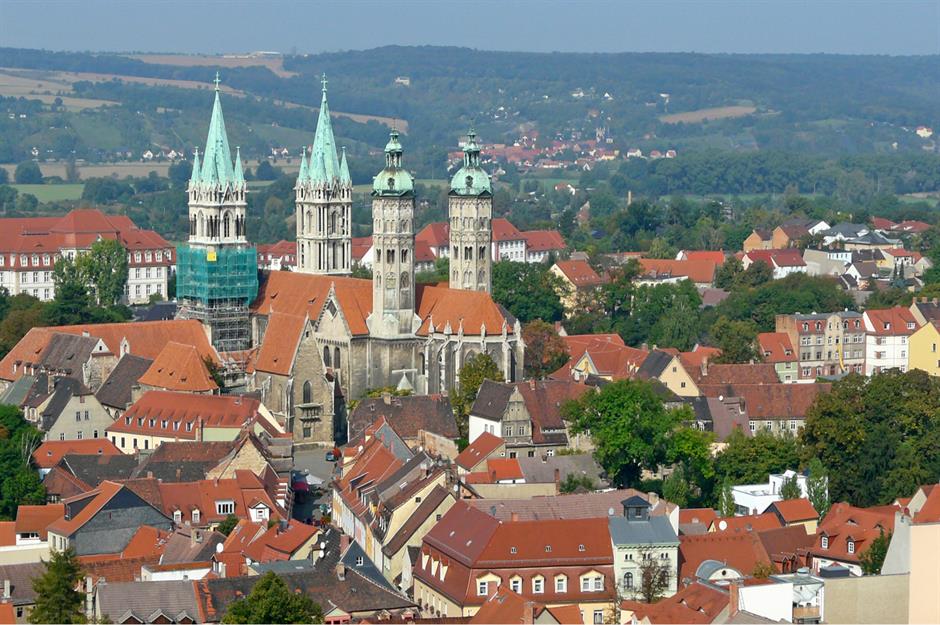
The other buildings in Naumburg, a town in central Germany, hardly get a look in; the dramatic copper domes and spires of this 11th-century church overshadow the rest, both literally and figuratively. Surrounded by hills and vineyards and looming above streets lined with red-roofed houses, Naumburg Cathedral, or the Cathedral of St Peter and St Paul, is a beguiling blend of Romanesque and Gothic architecture.
Lake Constance, Bavaria
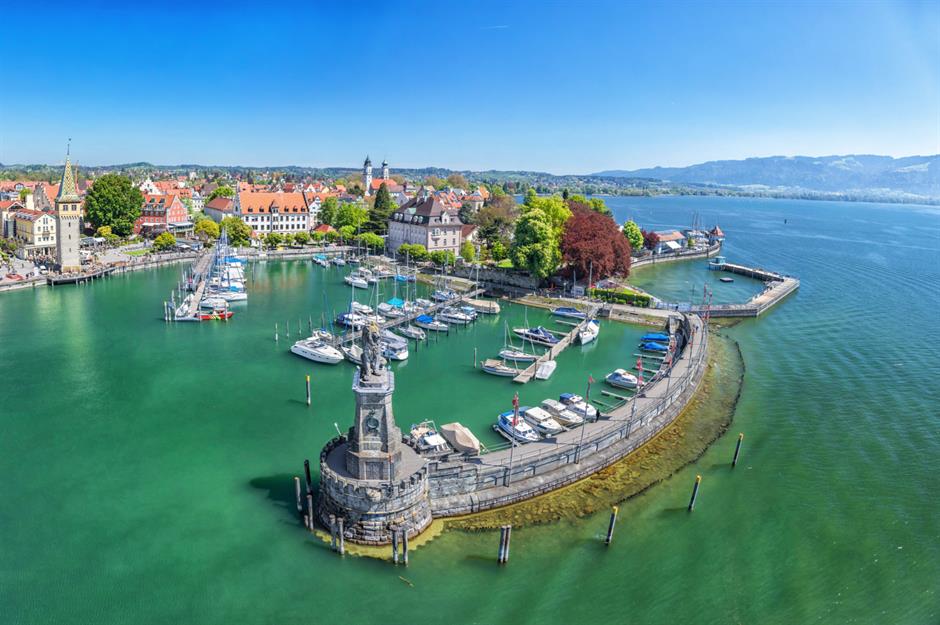
Germany’s largest lake is a big blue (and sometimes green) beauty, as well as harbouring some of Bavaria’s prettiest towns and cities around its shores. The overhead photo shows Lindau, an idyllic lakeside destination whose old town looks even more charming when viewed from the skies. Among striking structures are the Bavarian Lion statue, on the outer edge of the harbour, and Mangturm (pictured), a 12th-century former watchtower easily recognisable due to its skinny structure and the zigzagged tiles on its pointed roof.
Altenburg Castle, Bavaria
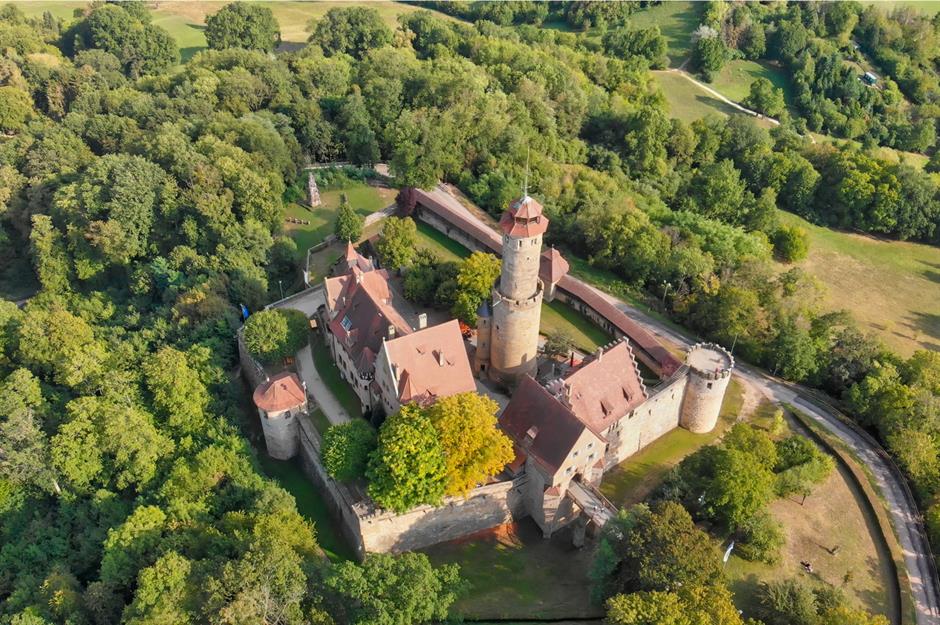
Sitting atop the tallest hill in Bamberg, a picture-perfect town in northern Bavaria, Altenburg Castle looks rather toy-like when viewed from above. But this is a place that’s rich in history, stretching back to the 12th century when it was a refuge before providing an opulent residence for the town’s bishops from the 14th century. Most of the structure was destroyed during a war in the 16th century, though the surviving keep – surrounded by greenery – remains one of the area’s main attractions.
Brandenburg Gate, Berlin
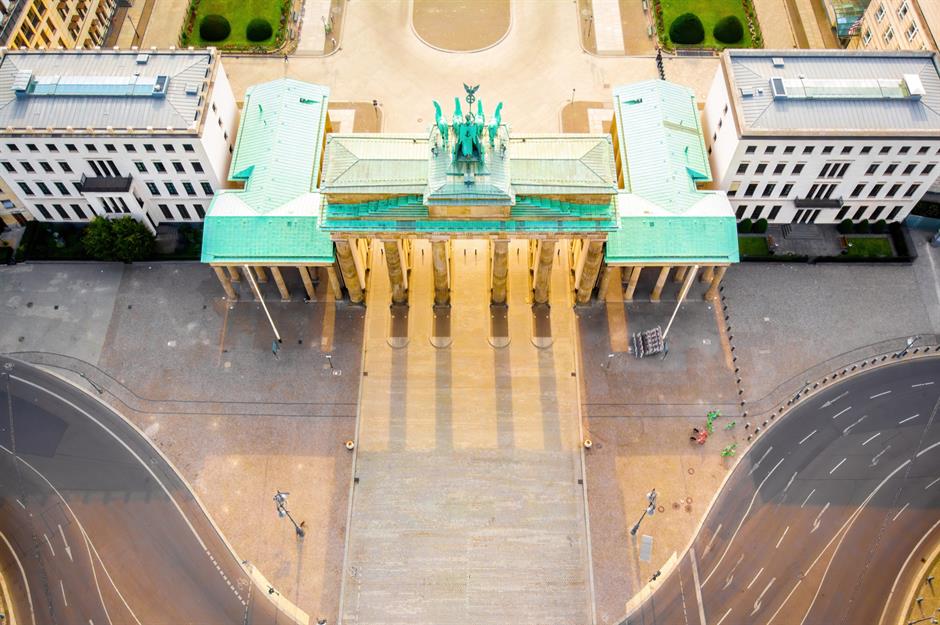
One of Berlin’s – and Germany’s – most famous landmarks, the Brandenburg Gate’s grand sandstone columns are an iconic sight in the city. Seen from above, though, the Greek-Revival structure displays some less-viewed qualities. This drone photo, taken in the soft golden light just after sunrise, shows off the jade hue of its roof. It’s topped with the Quadriga statue, which depicts a chariot with four horses and was added in 1793, two years after the gate was completed.
Learn more about Brandenburg and the world's other beautiful gates here
Comments
Be the first to comment
Do you want to comment on this article? You need to be signed in for this feature